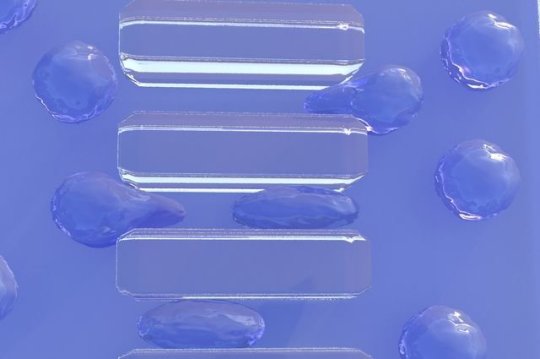[ad_1]
UCLA researchers have developed synthetic T lymphocytes, or T cells, that are near-perfect facsimiles of human T cells.
The ability to create the artificial cells could be a key step toward more effective drugs to treat cancer and autoimmune diseases and could lead to a better understanding of human immune cells’ behavior. Such cells also could eventually be used to boost the immune system of people with cancer or immune deficiencies.
The research team comprised scientists from the UCLA School of Dentistry, the UCLA Samueli School of Engineering and the department of chemistry and biochemistry in the UCLA College, and was led by Dr. Alireza Moshaverinia, an assistant professor of prosthodontics at the dental school. The findings are published in the journal Advanced Materials.
“The complex structure of T cells and their multifunctional nature have made it difficult for scientists to replicate them in the lab,” Moshaverinia said. “With this breakthrough, we can use synthetic T cells to engineer more efficient drug carriers and understand the behavior of immune cells.”
Natural T cells are difficult to use in research because they’re very delicate, and because after they’re extracted from humans and other animals, they tend to survive for only a few days.
“We were able to create a novel class of artificial T cells that are capable of boosting a host’s immune system by actively interacting with immune cells through direct contact, activation or releasing inflammatory or regulatory signals,” said Mohammad Mahdi Hasani-Sadrabadi, an assistant project scientist at UCLA Samueli. “We see this study’s findings as another tool to attack cancer cells and other carcinogens.”
T cells play a key role in the immune system. They are activated when infection enters the body and they flow through the bloodstream to reach the infected areas. Because they must squeeze between small gaps and pores, T cells have the ability to deform to as small as one-quarter of their normal size. They also can grow to almost three times their original size, which helps them fight off or overcome the antigens that attack the immune system.
Until recently, bioengineers hadn’t been able to mimic the complex nature of human T cells. But the UCLA researchers were able to replicate their shape, size and flexibility, which enable it to perform its basic functions of targeting and homing in on infections.
The team fabricated T cells using a microfluidic system. (Microfluidics focuses on the behavior, control and manipulation of fluids, typically on a submillimeter scale.) They combined two different solutions — mineral oil and an alginate biopolymer, a gum-like substance made from polysaccharides and water. When the two fluids combine, they create microparticles of alginate, which replicate the form and structure of natural T cells. The scientists then collected the microparticles from a calcium ion bath, and adjusted their elasticity by changing the concentration of calcium ions in the bath.
Once they had created T cells with the proper physical properties, the researchers needed to adjust the cells’ biological attributes — to give them the same traits that enable natural T cells to be activated to fight infection, penetrate human tissue and release cellular messengers to regulate inflammation. To do that, they coated the T cells with phospholipids, so that their exterior would closely mimic human cellular membranes. Then, using a chemical process called bioconjugation, the scientists linked the T cells with CD4 signalers, the particles that activate natural T cells to attack infection or cancer cells.
Moshaverinia said other scientists could use the same process to create various types of artificial cells, such as natural killer cells or microphages, for research on specific diseases or to help develop treatments; in the future, the approach could help scientists develop a database of a wide range of synthetic cells that mimic human cells.
The study’s other authors, all of UCLA, are graduate student Fatemah Majedi; Steven Bensinger, a professor of microbiology, immunology and molecular genetics; Dr. Ben Wu, a professor of dentistry and bioengineering; Louis Bouchard, an associate professor of chemistry and biochemistry; and Paul Weiss, a distinguished professor of chemistry and biochemistry. Bensinger, Bouchard and Weiss are also members of the UCLA Jonsson Comprehensive Cancer Center.
This study was funded by the National Institute for Dental and Craniofacial Research.
[ad_2]















